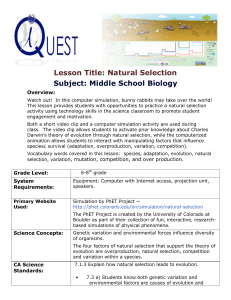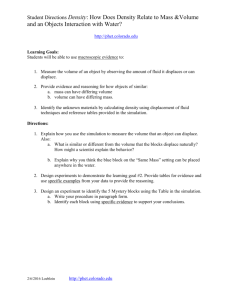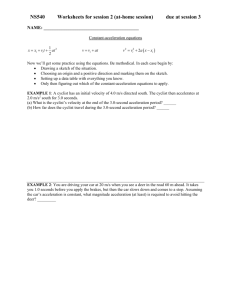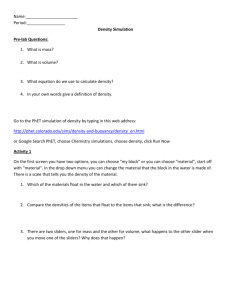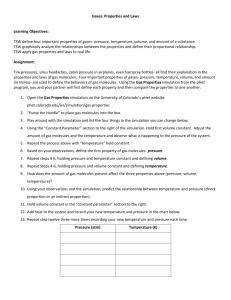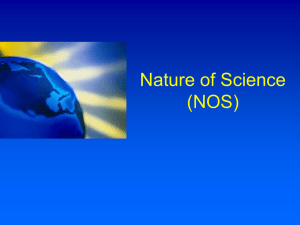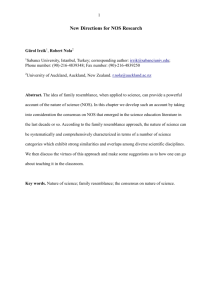Natural Selection vs. Evolution Activity Card
advertisement
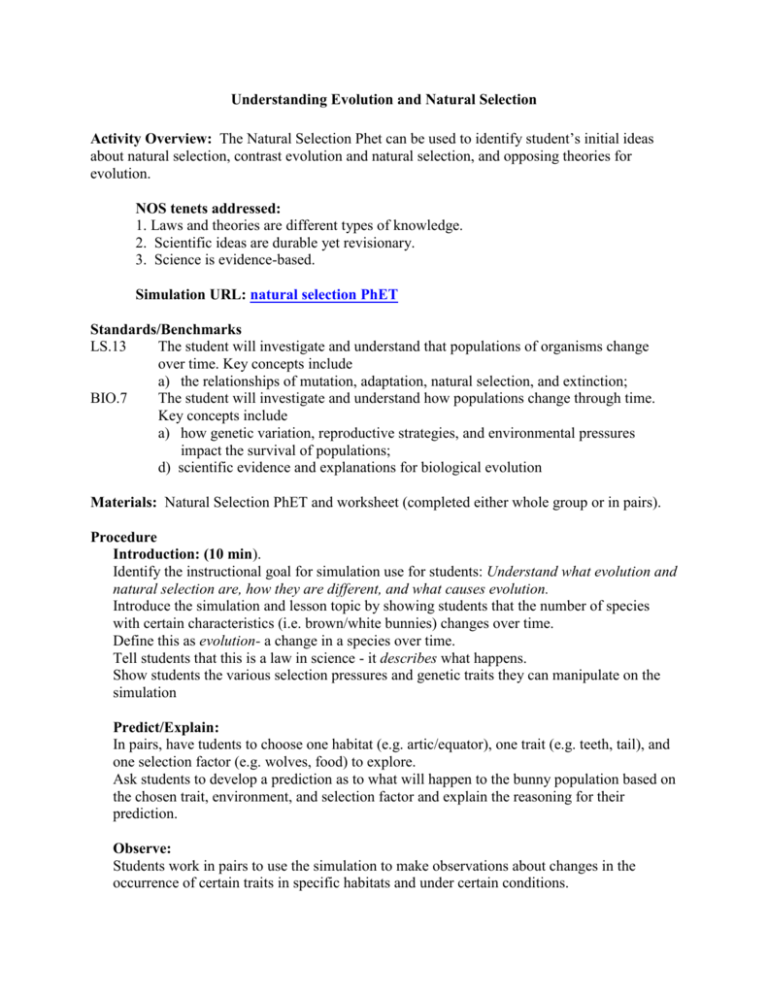
Understanding Evolution and Natural Selection Activity Overview: The Natural Selection Phet can be used to identify student’s initial ideas about natural selection, contrast evolution and natural selection, and opposing theories for evolution. NOS tenets addressed: 1. Laws and theories are different types of knowledge. 2. Scientific ideas are durable yet revisionary. 3. Science is evidence-based. Simulation URL: natural selection PhET Standards/Benchmarks LS.13 The student will investigate and understand that populations of organisms change over time. Key concepts include a) the relationships of mutation, adaptation, natural selection, and extinction; BIO.7 The student will investigate and understand how populations change through time. Key concepts include a) how genetic variation, reproductive strategies, and environmental pressures impact the survival of populations; d) scientific evidence and explanations for biological evolution Materials: Natural Selection PhET and worksheet (completed either whole group or in pairs). Procedure Introduction: (10 min). Identify the instructional goal for simulation use for students: Understand what evolution and natural selection are, how they are different, and what causes evolution. Introduce the simulation and lesson topic by showing students that the number of species with certain characteristics (i.e. brown/white bunnies) changes over time. Define this as evolution- a change in a species over time. Tell students that this is a law in science - it describes what happens. Show students the various selection pressures and genetic traits they can manipulate on the simulation Predict/Explain: In pairs, have tudents to choose one habitat (e.g. artic/equator), one trait (e.g. teeth, tail), and one selection factor (e.g. wolves, food) to explore. Ask students to develop a prediction as to what will happen to the bunny population based on the chosen trait, environment, and selection factor and explain the reasoning for their prediction. Observe: Students work in pairs to use the simulation to make observations about changes in the occurrence of certain traits in specific habitats and under certain conditions. Students use the worksheet to record data and draw conclusions. Explain and NOS Debrief (10 min): Students share their findings from their investigations with the entire class. Point out that their findings are based on data and are thus empirically based (NOS tenet: Scientific knowledge is based on empirical evidence.) Ask student to brainstorm possible reasons why the ratio of bunnies with certain traits changes over time (Student answers should include gene changes and selection pressures). Revisit the definition of evolution and ask them how their findings explain why evolution occurs. Identify this as a scientific theory. Scientific theories explain scientific laws. (NOS tenet: Laws and theories are different types of scientific knowledge. Laws describe what happens and theories explain why). Explain to students that the appearance of a species is a function both of genes/mutations and selection pressures. Contrast the ideas of Charles Darwin and Jean Baptiste Lamarck (i.e. ) (NOS tenets: Scientific ideas are tentative. They are durable yet revisionary and can change with new evidence.) Modifications For older students (high school) details about mutations can be given. A hands-on activity can be added to get students moving around the room. Have students with different types of tools that can pick seeds of different sizes up (pliers of different types, tweezers) try to collect as many seeds as possible. Set a limit for survival ie. 20 seeds in one minute. See if some groups live/die and relate it to bird beaks and survival in different habitats. This can incorporate math by having students calculate the number of calories consumed. The simulation activity can be conducted whole-class. Assessment Strategies Formal: Exit ticket asking students to explain the difference between evolution and natural selection. Student worksheet.
